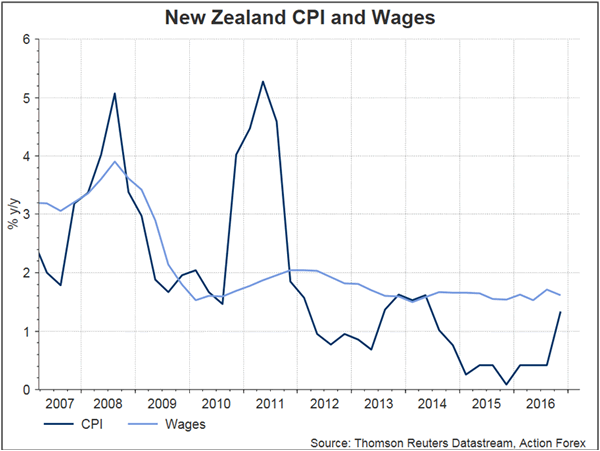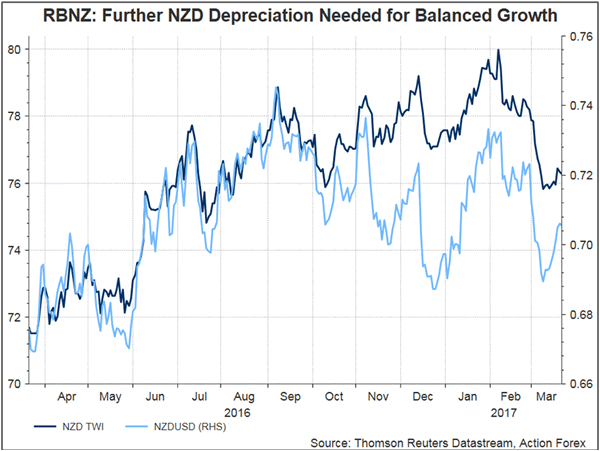As widely anticipated, RBNZ left the OCR unchanged at 1.75% and maintained the neutral bias in the monetary policy stance. Domestic economic developments remained upbeat with rising inflation and positive growth outlook. Policymakers attributed weaker-than-expected 4Q17 GDP to temporary factors. The central bank acknowledged the recent depreciation in trade-weighted exchange rate. Yet, it reiterated that a weaker kiwi would be needed for more balanced growth. RBNZ warned that geopolitical uncertainty remained the biggest challenge in the global economic development. We expect RBNZ would stand on the sideline throughout the year.
RBNZ acknowledged that headline inflation had ‘returned to the target band as past declines in oil prices dropped out of the annual calculation’. It expected the headline reading would be variable over the next 12 months due to ‘one-off effects from recent food and import price movements, but is expected to return to the midpoint of the target band over the medium term’. The central bank maintained the longer-term inflation expectations at ‘around +2%’. Policymakers also noted moderation in house price, thanks to ‘loan-to-value ratio restrictions and tighter lending conditions’. What is uncertain is ‘whether this moderation will be sustained given the continued imbalance between supply and demand’.

New Zealand’s GDP expanded +2.7% y/y and +0.7% q/q, in 4Q16, compared with consensus of +3.2% and +0.7%, respectively. Yet, RBNZ noted that ‘some of this is considered to be due to temporary factors’. It remained confident that ‘the growth outlook remains positive, supported by on-going accommodative monetary policy, strong population growth, and high levels of household spending and construction activity’. RBNZ also remained positive over the global economic outlook. Yet, it cautioned that the major challenges would be ‘on-going surplus capacity’ and ‘extensive geopolitical uncertainty’.
On exchange rate, policymakers welcomed the -4% decline in the trade-weighted New Zealand dollar index since February. They believed the depreciation was partly driven by ‘weaker dairy prices and reduced interest rate differentials’. Nonetheless, they emphasized that ‘further depreciation is needed to achieve more balanced growth’.

The monetary decision had been widely anticipated. Following three rate cuts in 2016, the central bank would likely leave the policy rate unchanged throughout 2017. Bloomberg estimates suggest that the market is pricing in about 38% chance of a +25 bps rate hike by the end of this year. The chance of such an increase in 2018 has been fully priced in.














